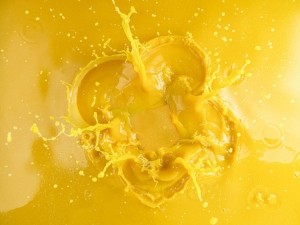California’s food additive ban will require urgent reformulation of 12,000 products

California governor Gavin Newsom has signed Assembly Bill 418 - known as the California Food Safety Act, the first law of its kind in the US - to ban the four from being used as additives in food and beverages sold or manufactured in the state.
The Act does not go into effect until January 2027 to give companies time to reformulate their products, however, many mainstream consumer brands stopped using these ingredients years ago. Exporters, particularly, have come up with alternatives for the same products for the European markets, where the four are banned.
Potassium bromate
Back in 2019, the US Food and Drug Administration (FDA) told Bakery&Snacks that US bakers have used potassium bromate as a dough conditioner ‘for many decades’, although it has been classified as a possible human carcinogen by the IARC and outlawed by the EU, the UK, Canada, China and several other countries.
KBrO3 - first patented for use in baking bread in 1914 - is considered an excellent dough improver and maturing agent and is still widely used in the US. In the late dough stage, it oxidises the sulphydryl groups of flour’s gluten protein, making dough more elastic so it can retain the CO2 produced by the yeast used in leavening. It also bleaches the dough, increases loaf volume and improves texture.
Moreover, it’s probably the cheapest and most effective oxidiser used in bread production, meaning bakeries that use it often exploit these beneficial properties for profit.
While the heat from baking catalyses the conversion of potassium bromate into the less toxic potassium bromide, excessive use can potentially have harmful effects.
The chemical is listed under FDA’s Title 21 of the Code of Federal Regulations, meaning the agency deems it suitable for use up to 75mg/kg of flour.
The FDA told this site it worked with the American Bakers’ Association (ABA) and the American Institute of Baking (AIB) “to improve the technology so that minimal-to-no residual bromate remains in the finished product” - limiting residues to less than 20 parts per billion (ppb) – a target readily reached, according to the FDA.
In addition to periodically testing breads and rolls for residual bromate (the last of which occurred between 2012 and 2014), the FDA said, “it is also worth noting that according to our surveys, the US baking industry is no longer widely using potassium bromate … [however] … provided industry is complying with good manufacturing practices, residual bromate does not pose a public health hazard.”
California’s environmental protection agency disagrees and has listed potassium bromate on its Proposition 65 list of chemicals since 1990, a determination based on cancer research from the World Health Organization (WHO).
In effect since November 1986, Prop 65 requires businesses to provide warnings on products that contain chemicals shown to cause cancer, birth defects or reproductive harm.
Sam Delson, a legislative affairs director at California’s Office of Environmental Health Hazard Assessment (OEHHA), told Bakery&Snacks any product that contains more than 1mg of potassium bromate – or 11 parts per billion (ppb) – must include the standard warning.
“This is our estimate of the level of exposure that would cause one additional case of cancer for every 100k people exposed to that daily level over a lifetime,” he said, noting that breads exceeding levels of 11ppb are “not uncommon” on US supermarket shelves.
Propylparaben
According to the Environmental Working Group’s (EWG) Food Scores app, the preservative is currently found in 53 widely available treats, from cakes to cookies, eclairs to muffins and even tortilla chips.
Propylparaben (CAS no. 94-13-3) is a stable, non-volatile compound that has been used as an antimicrobial preservative in foods, drugs and cosmetics for over 50 years. While the FDA has given it a GRAS (generally recognised as safe) listing, there’s a mounting body of evidence showing it to disrupt the endocrine system.
While propylparaben naturally occurs in some fruit and vegetables (barley, flaxseed and grapes), it is known to act as a synthetic estrogenic compound and can alter hormone signalling and gene expression, causing concern it may contribute to breast cancer or is associated with diminished fertility. As such, the chemical has restricted use in the EU, in ASEAN countries and Japan.
GRAS
The FDA created the GRAS designation in 1958 so manufacturers could use common ingredients like vinegar and baking soda without submitting a formal food additive petition or triggering a rigorous premarket safety review. Since 1997, manufacturers have been able to self-determine GRAS chemicals and what was a category created to be a narrow exception has become the rule. A 2022 study by the EWG found 756 of the 766 new chemicals added to the US food supply since 2000 came in as GRAS.
According to the Food Additives regulation, food manufacturers must demonstrate the safety of food additives before adding them - but not if that additive has already been approved as GRAS.
“As defined in the FDA’s regulations, ‘safety’ for substances used in food means that there is reasonable scientific certainty that the substance is not harmful when used as intended,” concluded the FDA.
“This safety standard applies to uses of food additives, colour additives and substances that are GRAS. This also includes substances that are expected to become components of food that are used in producing, manufacturing, packing, processing, preparing, treating, packaging, transporting or holding food.”
As needed, the agency evaluates consumption levels of new additives, based on new research to ensure they remain ‘within safe limits.’
It also noted its authority to review and evaluate new data on substances added to food, regardless of their GRAS or approved-as-additive status. These decisions can occur when new research or incidents reveal potential safety hazards or when consumption levels shift for whatever reason - which may lead to measures aimed at reducing consumption or prohibiting a substance outright.
Red Dye No. 3
The FDA banned erythrosine for use in cosmetics more than 30 years ago because it was found to cause cancer in lab animals, but still permits its use in food.
Today, the synthetic food colouring - which is actually made from petroleum and imparts a bright, cherry-red colour - is present in 488 big brands listed on EWG’s Food Scores app, including Lays, Cheetos, Doritos, Sunchips, Herr’s, Utz, Cap ‘n Crunch and hundreds of candies.
Long term animal feeding studies show that Red 3 causes adenomas and carcinomas of the thyroid gland. When a substance is shown to cause cancer in animals, it is presumed to have a similar effect in humans, hence the Delaney Clause added to US food laws passed in 1958 and 1960, prohibiting the approval of any food and colour additive shown to cause cancer in people or animals. Which is why the Center for Science in the Public Interest (CSPI), along with 23 other organisations and prominent scientists, last year filed a petition with the FDA to formally delist Red 3.
“Most people would be quite surprised to learn that a known carcinogen is banned for use in lipstick but still widely used in thousands of foods, including many candies, baked goods, and drinks marketed to children,” said CSPI president Peter Lurie
“The primary purpose of food dyes is generally to make ‘junk’ food look more attractive, especially to kids, or to trick their parents into thinking a food contains a healthy fruit like strawberries.
“When the purpose is purely cosmetic, why is any level of risk acceptable?”
“California has corrected that absurdity for Californians, and - if past is prologue - the impact of this law will reverberate throughout the nation and at the FDA.”
Besides the risk of cancer posed by Red 3, concerns are mounting about the adverse impacts on children’s behaviour by all numbered dyes, including Yellow 5 and Red 40. According to California’s OEHHA, those dyes cause neurobehavioral problems described as similar to the symptoms associated with ADHD.
“These petitions offer the FDA a chance to step up to the plate and do its job to protect Americans from toxic food chemicals,” added Scott Faber, EWG senior VP of government affairs, EWG.
Brominated vegetable oil
BVO is used primarily to help emulsify citrus-flavoured soft drinks, preventing them from separating during distribution. Many of the larger brands - like Coca-Cola and Pepsi - have stopped using the chemical, but it’s still found in some smaller brands.
It also one of the additives banned across the pond. Health concerns centre around one of its components - bromine - which has the ability to irritate the skin and mucous membranes. Animal studies indicate it can transfer from mother’s milk to the nursing infant and can cause heart lesions, fatty changes in the liver, and impaired growth and behavioural development. Bromine toxicity (cough, trouble breathing, headache, dizzy, memory loss) can occur in people who guzzle more than 2 litres of soda a day.
Safety questions have been hanging over BVO since 1970, when the FDA removed it from the GRAS list, but maintained it on the interim list pending additional studies. Earlier this year, the US Department of Health issued a notification of a proposed rule to amend BVO authorisation, following new scientific information that demonstrates ‘there is not a reasonable certainty of no harm from the continued use of BVO in food.’
Titanium dioxide
Governor Newsom’s bill initially included titanium dioxide (E171) - a widely used food pigment that enhances the white colour or opacity of foods - but this was dropped during the legislative process amid criticism it amounted to a ban of popular candy brands.
Newsom’s contentious bill nabbed attention on X (formerly Twitter) after a post claiming ‘California will officially ban Skittles and other candies from the state starting 2027’ was viewed more than 15 million times. Although the law no longer includes titanium dioxide, the ‘Skittles ban’ moniker has stuck.
“There have been many misconceptions about this bill and its impacts,” said Newsom.
“For example, attached to this [Assembly Bill 418] is a bag of the popular candy Skittles, which became the face of this proposal. This particular bag of candy comes from the European Union - a place that already bans a number of chemical additives and colorants. This is demonstrable proof that the food industry is capable of maintaining product lines while complying with different public health laws, country-to-country.”
The FDA said it is aware of recent actions taken by the EU regarding use of E171 as a colour additive, adding “other international regulatory bodies - including the United Kingdom’s FSA, Health Canada and FSANZ - have not agreed with the EU assessment.”
Ramping up pressure to reformulate
Authored by state assembly member Jesse Gabriel and co-sponsored by the Environmental Working Group (EWG) and Consumer Reports, the California Food Safety Act is sure to increase pressure on food producers across the country to reformulate. In fact, a similar bill has been introduced in the New York state legislature.
“The Governor’s signature represents a huge step in our effort to protect children and families in California from dangerous and toxic chemicals in our food supply,” said Gabriel, chair of the state Assembly Committee on Privacy and Consumer Protection.
“It’s unacceptable that the US is so far behind the rest of the world regarding food safety.
“This bill will not ban any foods or products - it will require food companies to make minor modifications to their recipes and switch to safer alternative ingredients that they already use in Europe and so many other places around the globe.”
Companies have until January 2027 to reformulate their products or face a fine of up to $5,000 for the first offense and $10,000 for each subsequent infraction.
Newson believes this is more than “significant time for brands to revise their recipes to avoid these harmful chemicals,” while Brian Ronholm, director of food policy at Consumer Reports, reports some have already started.
“We’ve known for years that the toxic chemicals banned under California’s landmark new law pose serious risks to our health. California has taken an important stand for food safety at a time when the FDA has been very slow to take action,” said Ronholm.
“By keeping these dangerous chemicals out of food sold in the state, this groundbreaking law will protect Californians and encourage manufacturers to make food safer for everyone.”
Advocates of the bill believe all of the banned substances can be replaced with less risky alternatives that will not add significantly - if at all - to consumer prices.
“This is a milestone in food safety, and California is once again leading the nation,” said EWG president Ken Cook.
“We applaud Governor Newsom for signing this landmark bill and putting the health of Californians before the interests of industry. California is creating a healthier market for consumers.”
Patchwork of inconsistent state requirements
Not all industry players are as complimentary.
The National Confectioners Association (NCA) - the leading trade organisation for the US confectionery industry, which generates $42 billion in retail sales each year - claims the bill “will undermine consumer confidence and create confusion around food safety.
“They’re making decisions based on soundbites rather than science,” said an NCA spokesperson.
“This law replaces a uniform national food safety system with a patchwork of inconsistent state requirements created by legislative fiat that will increase food costs. This is a slippery slope that the FDA could prevent by engaging on this important topic. We should be relying on the scientific rigor of the FDA in terms of evaluating the safety of food ingredients and additives.”
In a statement, the International Association of Color Manufacturers said no regulatory authority “has found credible safety concerns with these additives” and that banning Red Dye No. 3 unnecessarily overrides established safety standards.
Sarah Gallo, VP of product policy at the Consumer Brands Association, said the law “sets a dangerous precedent for circumventing our country’s science and risk-based reviews that prioritise consumer health and safety.”
The FDA response
While Newsom views Assembly Bill 418 as “a positive step forward on these four food additives until the FDA reviews and establishes national updated safety levels for these additives,” the government agency said it has already evaluated all four listed.
“The claim that these substances have not undergone FDA review is inaccurate,” said an FDA spokesperson.
“According to US law, ingredients added to food must be safe under their intended conditions of use and safety information must be available to establish a reasonable certainty of no harm before they are used in products on the market.
“When we identify new data and information that indicates the use of an ingredient is unsafe, we take steps to protect public health - which can include revoking authorisations or approvals for certain uses, working with industry on voluntary market phase-out agreements and recalls, issuing alerts and informing consumers.”
























